On Hunting Pressure and Going Nocturnal
I used to buy the whole “They go nocturnal” thing. However, the more I have learned about deer, the less I buy it.
Deer are not even close to us in how their bodies are set up. The have this fermentation process going on. They have to get up and eat, move around, and then lay back down and chew cud in a never ending cycle. If they deviate too far from that schedule they die. Even small perturbations cause them distress the same way we get gas pains from eating bad Taco Bell.
I’ve seen two theories on deer eating. One is that they require 4 feedings 6 hours apart and another 6 feedings 4 hours apart. The stuff has to go in and out on a fairly tight schedule, and it can’t all be crammed in during the night time.
Rather than looking at it as “they went nocturnal.” It’s better to think about it as
1) They’re eating elsewhere– someplace you’re not. Go find that place, and you’ll find your deer.
2) They’re eating closer to their beds and not moving as much.
3) They’re holding off coming out into the fields until before/after legal hunting. Yes, but where are they holding? They’re up. They’re somewhere.
When you look at the changes that are going on between October and November in a whitetail’s world, it may very well be that the whitetail is more of a constant and far less of a variable. Not only is the amount of daylight lessening, but the rate of change accelerates, especially in the morning.
The rate of change in the morning is about a minute/day in August and it accelerates to 1:37 /day in September and does not get back under a minute/day until 11/6. Sunsets follow a different trajectory. The rate changes from 1:00 /day to 1:37/day but on a smoother cycle. The over all net is about 2:00 to 2:30 per day less light. Bottom line: In the fall, the amount of daylight changes radically, and the deer have conflicting signals. The fermentation system in their gut is forcing them to eat, but the sunrise and sunsets are constantly changing and giving them less light. We interpret this as the deer are “going nocturnal.” However, it’s more about following their gut.
I have cameras that monitor the deer in my backyard. I’ve got a 40-acre backyard that is a large U-shaped pasture surrounding a wooded ravine. I see the deer coming in and out to feed. Deer activity is very hit-and-miss. They enter the field from all sides and from the outside of the U as well as up from the ravine. What I see is that the deer generally follow a pattern of 2 days out of 7. That means if you see them come from a certain part of the U and move somewhere to eat, you’ll see them do it again once more in a 7 day period. However, I see them appear at slightly different times. My guess is that their gut is telling them to get up and move at pretty much the same time, but the light levels are different each day and they may come later or sooner.
One other thing: We often go out to eat during season, especially if we don’t have a deer to drop off at the processor. We’ll come in, drop our gear and then head out for town. It’s funny. On the nights where we didn’t see anything in the fields, we’ll often see deer right at the roads hanging out. Again, some might call that “going nocturnal.” I see it as their guts are telling them it’s time to eat later in the day.
Some of the experts in this field say that the feed closest to sundown is what resets the deer’s feeding clock. I’ve I cannot say this is true, but this goes to show how little is still known about whitetail habits.
I don’t care if you take the 4 feedings 6 hours apart or the 6 feeding 4 hours apart as a basic assumption. Just know that within a very short window, that feeding has to occur. Otherwise that fermentation engine starts fritzing out. Now take a clock and slice it up 4 ways and 6 ways in even sections. You’ll see that even if there a 9.5 hour day (like in late December) , there are 1-2 feedings during daylight hours. On the Rifle Opener, it’s more like 10 hours. Another way of looking at it is this: both the 4X6 and 6X4 plan are evenly divisible by 12. That means that if you see deer feeding at 8 O’Clock at night. It probably means they’ll be up and about feeding 12 hours later when you’re on the stand. Whether you see them or not is the question.
But Shaman! Big bucks are so worried about rutting they don’t feed during the rut. They may just snack, but they are eating. Those convoluted stomachs are there for a reason. If they don’t move, feed, bed, and chew cud on a fairly regular basis, the contents of their stomachs start to gas. It causes pressure, and it builds up. It causes distress. A bedded deer has to move around to get the gas through his system and that’s why deer almost invariably dump shortly after leaving their bed. Bucks do it IN their bed. Doe usually move off a bit before defecating. Imagine an alarm clock that goes off every 4-6 hours, only instead of a sound going off it’s a bellyache.
Hunting Pressure
Folks, I can tell you it ain’t about hunting pressure, at least not at our place. YMMV
Consider this:
1) We took 5 deer out of the same blind this year. I bagged my buck, then Remnar nailed his buck, then #2 son bagged his buck then #3 son bagged 2 doe– one in the morning and one in the evening of the last Saturday. You figure each one had one of us walking the 1/2 mile out to the blind, the shot, and then the truck rolling out with another hunter to pick up the carcass.
2) While all this hoo-haw was going on, SuperCore was driving in and out to his blind with an ATV and managed to bag a buck and a doe from Jagende Hutte
3) While we were tearing up the back of the place, the security cameras were picking up doe coming out to feed less than 100 yards from the back of the house.
Now, we’re in an area that sees a lot of human activity. The deer are used to us being on the property, but Cheese and Rice! That’s about as much pressure as you’re going to get on a deer herd. The only thing we didn’t do was hire a brass band!
Deer Density and Hunting Pressure
Of all the lessons I’ve learned in 40 years of this is:
Rule #1: Hunt where there are deer.
I spent a ridiculously large chunk of my hunting career hunting land that had very low numbers of deer. A good part of it is was that 40 years ago, there just were not that many deer to begin with. That led to all sorts of quirky behaviors and attitudes on my part. Now that I’m where I can see deer on a regular basis, my perspective has changed on a lot of this.
I’ve also had the deer just plain disappear for a few seasons. We started adopting all sorts of ideas about why and how it was happening. It turned out the neighbors had taken to poaching the place wholesale and what they hadn’t killed, they’d driven off. New owners finally stepped in and drove these excrements out. It took about 2 years for us to see a turnaround. So yes, I’ll agree that hunting pressure (at least in the extreme) will influence deer behavior. In response, I put in cameras so that I’d be able to document if it ever happened again.
I also have the perspective of having the farm and also having to live in suburbia during the week. One thing that shows me is how close city deer and country deer are similar. This is significant.
Look, if you’re seeing only a couple of deer a week, you can get all sorts of skewed ideas about how deer act and how deer interact with humans. I get it at a much more accelerated rate, because in the city, I have deer nearly crawling up my leg. However, it comes in fits and spurts. They’ll be gone for a time and then BANG! I’ve got them again. They’re in the yard, in the neighbors’ yards, in the road on the way to and from work. It seems random, but I know it’s not. There is reason for it. I just don’t fully understand. All this time, people are going about their business, out walking their dogs, etc.
Down at the farm, I’ve got the same thing. I sit out in back, drinking my scotch in the evening and “watch the tenants.” I may go a week not seeing anything. Then I’ll have a familiar doe group come out to feed. Sometimes they come within 40 yards of the house. Sometimes they act wary and stay back 200 yards. Sometimes they see me and run. Sometimes they ignore me. I’ve spent 20 years forming and shedding all sorts of superstitions about why that is. The bottom line is that nothing I see makes a whole lot of sense. Right now, and for the past 6 months, they’re acting like I’m radioactive. If they see me, they run like I’m trying to eat them. How did that translate into hunting success? We set multiple records this year. In October, I issued a warning to the camp: Be ready for an off year. Whoda thunk?
My point in saying all this is that
1) just because you’re not seeing deer, it doesn’t mean something dire has happened. It doesn’t mean they’ve gone nocturnal
2) Even if you discount the daily loss of daylight, “going nocturnal” still leaves an imperative to eat during daylight hours.
3) Having a) seen the similarity between city and country deer and b) seeing how random and non-sensical deer patterns can be I suggest that human contact may not be as big a factor as you think
Experiments
If you read through my weblog, you’ll find that I did experiments– well, not with a lab coat on– back during my time with D&DH magazine. One of them was testing the question of “hunting pressure and stand rotation.” Did deer really respond to hitting the same stand? I camped out in the same stand every day. What did I find? Surprisingly, the more I sat in one stand, the more deer I saw. It was like they got used to a pattern and decided I wasn’t a threat or they just didn’t care to begin with or. . . as I said, I try to stop making conclusions. There really is not a whole lot of sense to it. BTW: I nailed a nice 8-pointer from that stand midway through the first week. This became part of the Lorelei Incident– a pattern of behavior where I’m dead certain a particular doe figured out she could lead pesky bucks past my stand to get rid of them.
What is all this leading to? Who knows. What I will say is that deer don’t necessarily respond to “pressure” the way you think. It may be that more interaction with humans inures them. One thing is for sure:
1) Read my weblog entries on The Garden of Stone
2) Go skim the last season’s entries to see how we faired this year
3) Understand that The Garden of Stone is less than 100 yards from the family campground, and we had 2 dozen people camping there at times up until Labor Day. There were up to 4 dogs at a time there as well.
4) I had a camera set up about 100 yards from the campground and saw no change in deer visiting a salt lick during these campouts
so much for Pressure being a factor. I suppose I could have made everyone wear orange vests and wave toy guns, but you see how this “experiment” played out.
This post has already been read 486 times!
Views: 4
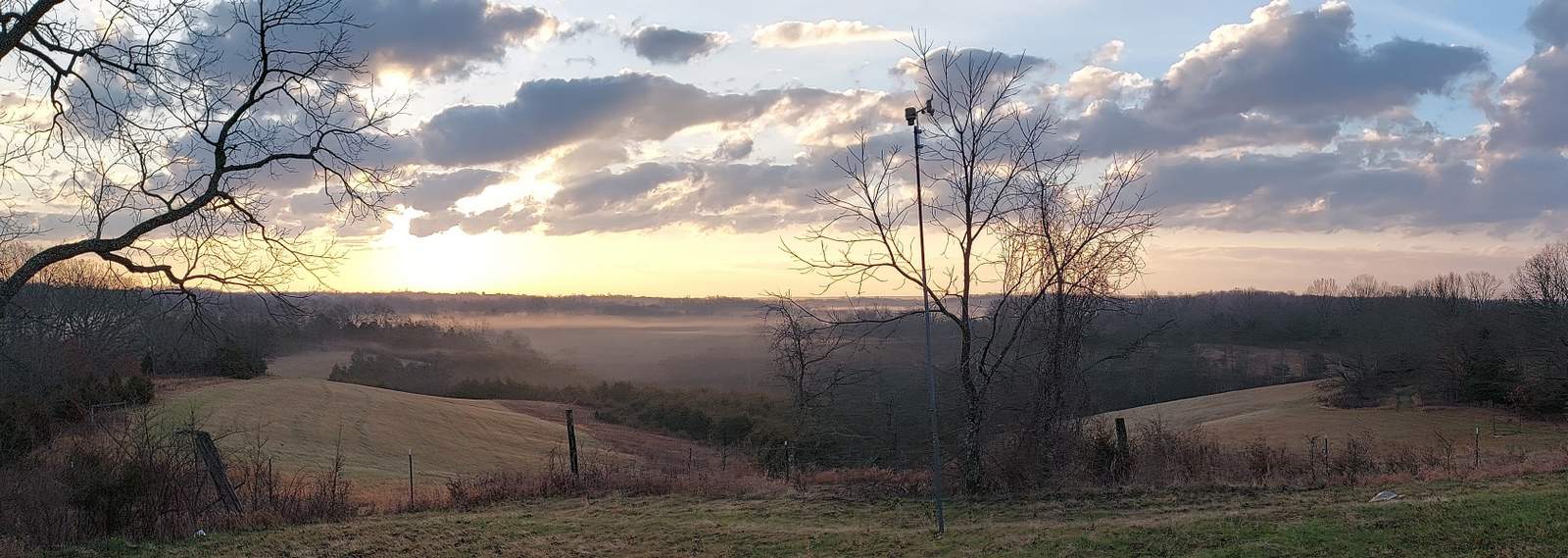

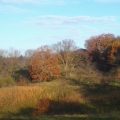

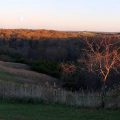
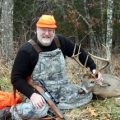
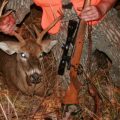
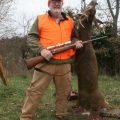
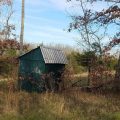
Comments
On Hunting Pressure and Going Nocturnal — No Comments
HTML tags allowed in your comment: <a href="" title=""> <abbr title=""> <acronym title=""> <b> <blockquote cite=""> <cite> <code> <del datetime=""> <em> <i> <q cite=""> <s> <strike> <strong>